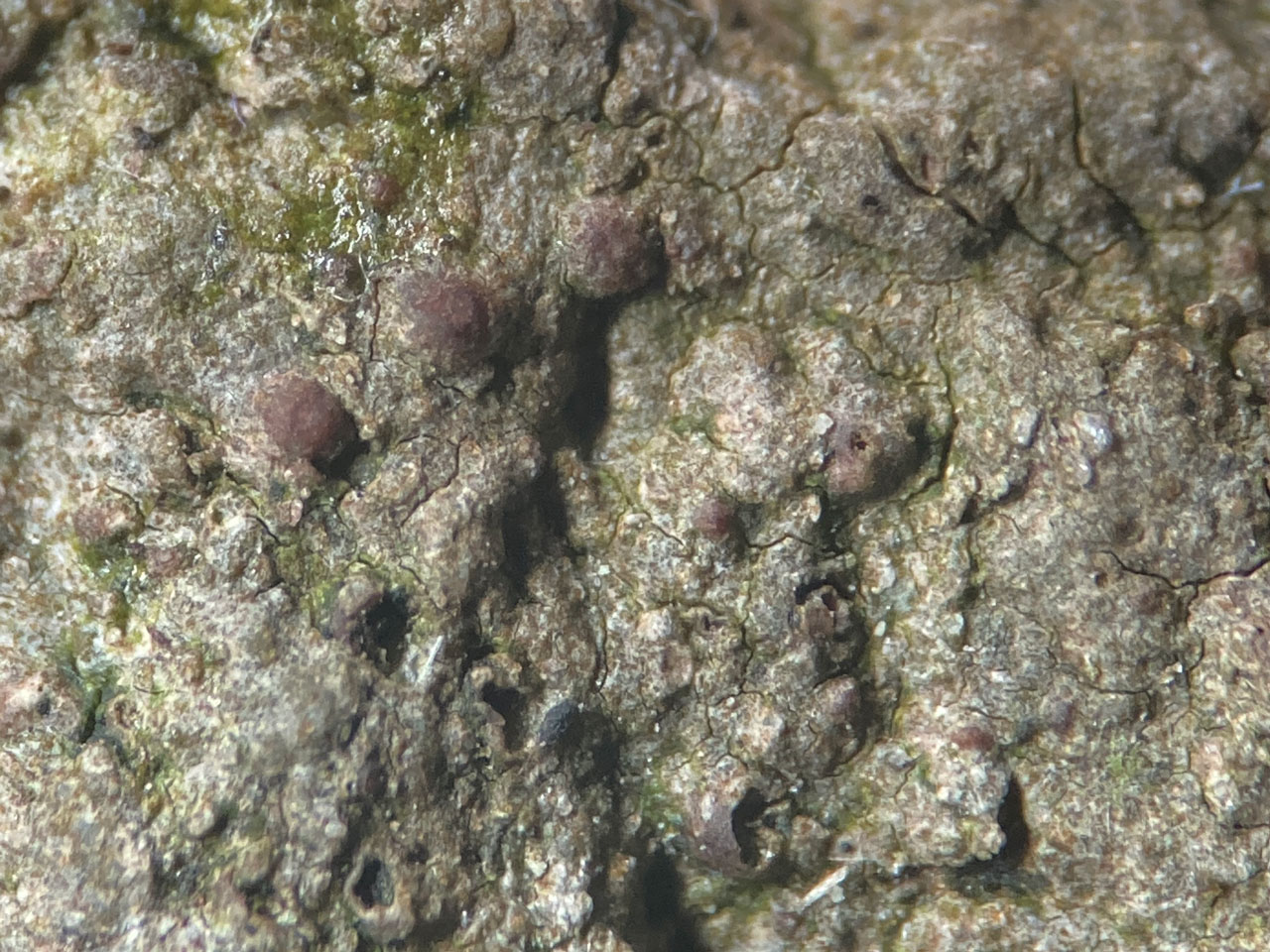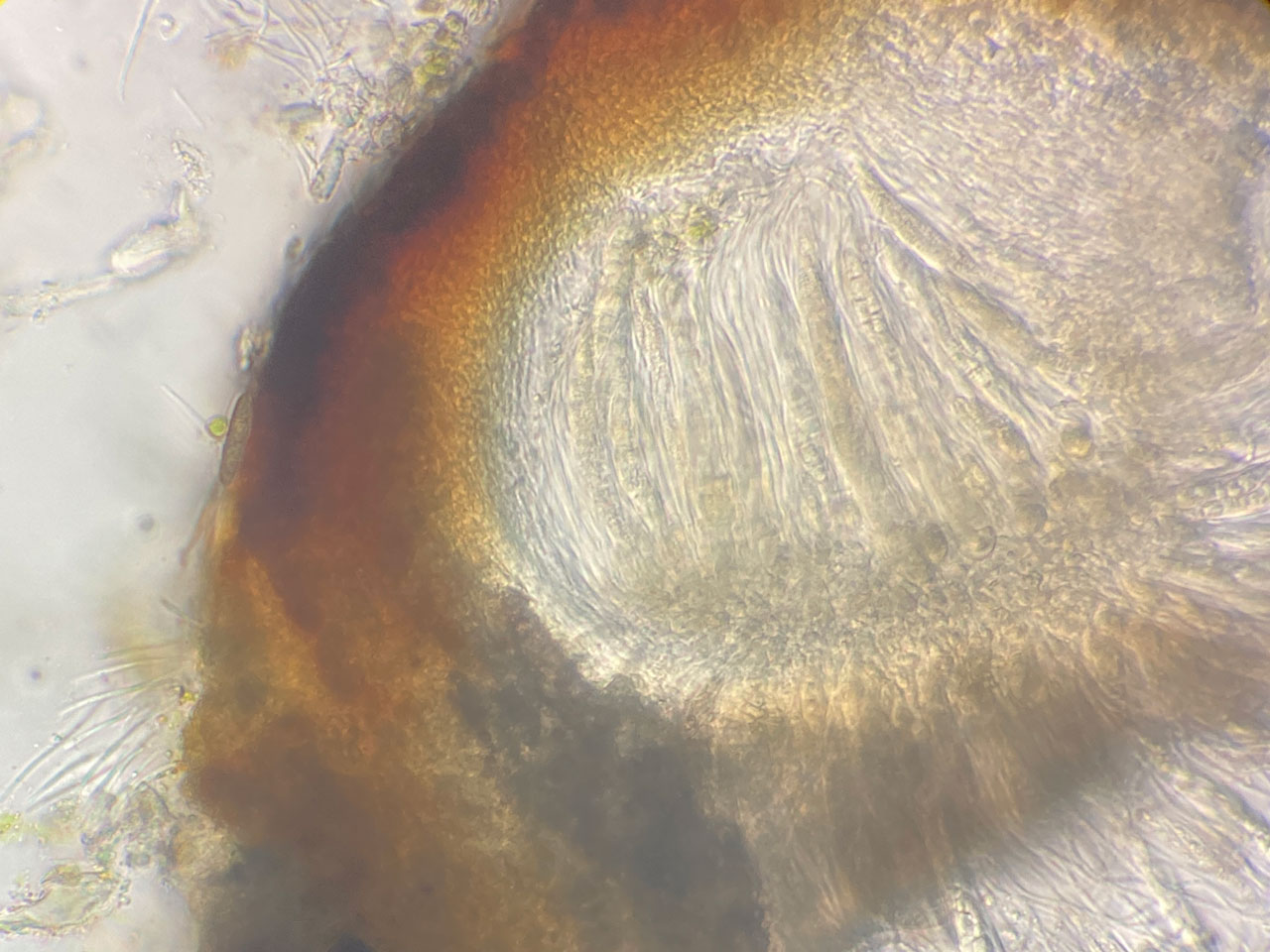Porina lectissima
A common species of damp siliceous rocks in the uplands. Recongised in the field by the large perithecia on damp rock which are orange or reddish when wet, but darker morphs may need checking.
Thallus superficial, well-developed, continuous or cracked, pale ochre to orange-brown, reddish brown or brownish green. Perithecia red-brown (brighter red when wet) to black (often black only at the apex), one quarter to one third immersed, 0.22–0.5 mm diam.; involucrellum thick, containing photobiont cells, either completely orange (Porina-yellow), or frequently also purple to violet, K+ dark blue-grey (Sagedia-red) at the surface. Asci with a ring structure. Ascospores 3-septate, (21·5–) 22–31 × 4·5– 6·5 μm. Pycnidia orange, ± immersed; conidia narrowly ellipsoidal to cylindrical, 3– 4.5 × 0.7–1 μm.
Usually recognised in the field by the large perithecia which are orange or reddish when wet, but morphs with black perithecia could be mistaken for Porina guentheri or others. P. ahlesiana differs in the 7-septate ascospores, P. leptalea is epiphytic but differs in the smaller perithecia and spores.
On damp siliceous rocks on water-flushed outcrops and in seepages and beside rivers and lakes, often forming extensive patches; locally abundant.

N. & W. Britain and Ireland.
Orange, A., Cannon, P., Malíček, J., Sanderson, N., Coppins, B. & Simkin, J. (2021). Ostropales: Porinaceae, including the genus Porina. Revisions of British and Irish Lichens 4: 1-12.
Text by N A Sanderson, based Orange et al (2021)



